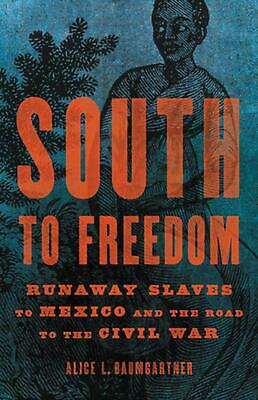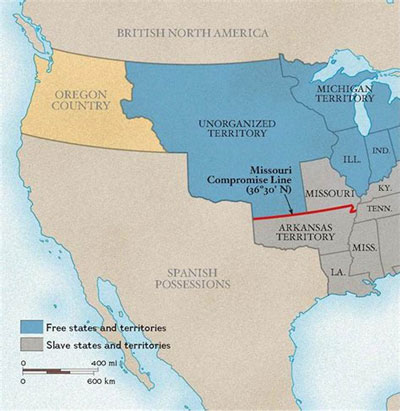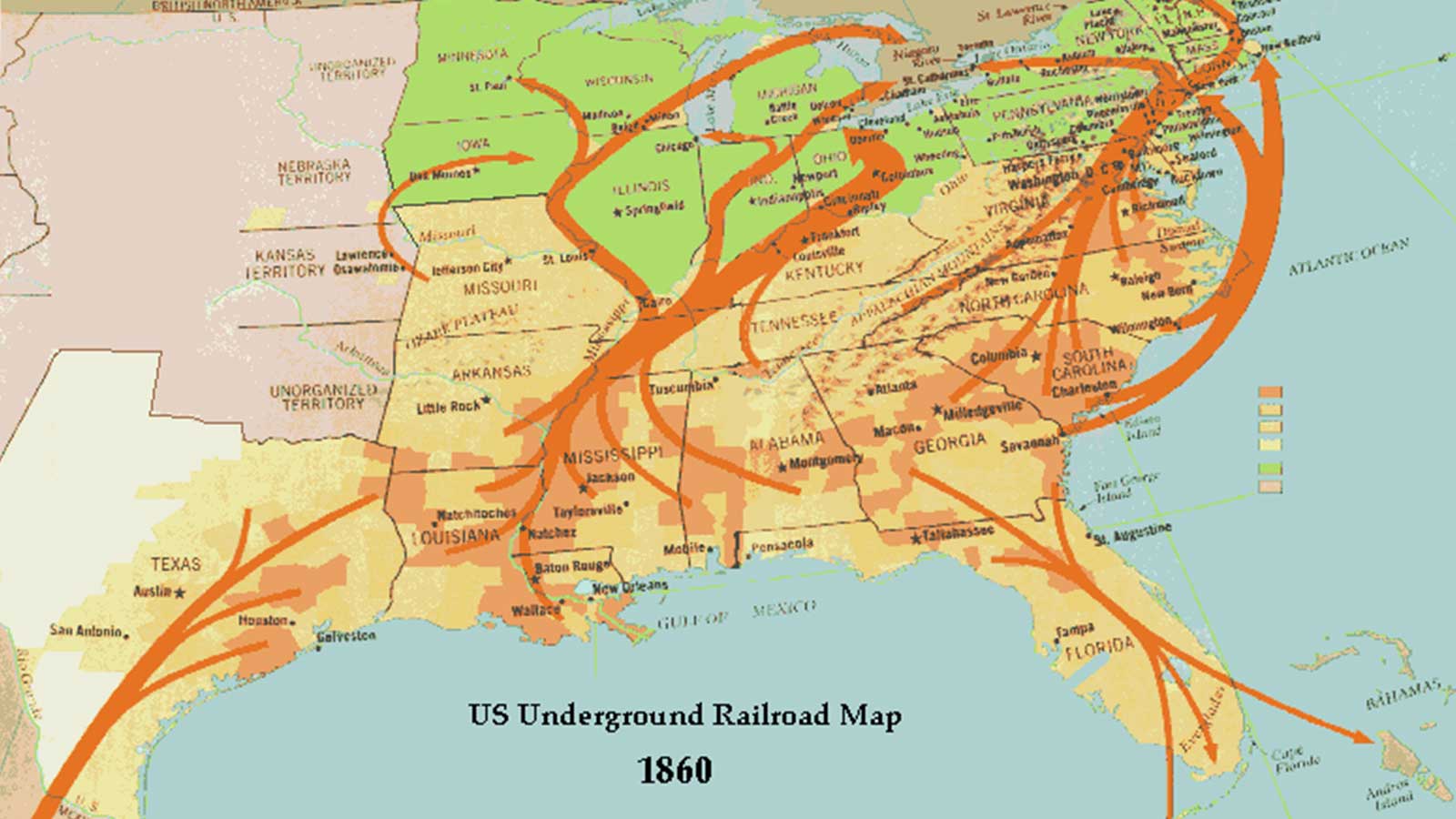A new book tells the forgotten story of fugitive slaves who found freedom south of the border.
David S. Reynolds, The New York Review
There has long been a fascination with the plight of enslaved Blacks who ran away from southern slaveholders in the decades before the Civil War. Powerful autobiographies by runaways such as Frederick Douglass, William Wells Brown, and Harriet Jacobs immerse us in their physical pain and psychological suffering, their longing and frustration, and their sense of liberation when they succeed in escaping. Harriet Beecher Stowe’s influential best seller Uncle Tom’s Cabin (1852) features a suspenseful plot about a couple and their young child who flee slavery in Kentucky. Toni Morrison’s novel Beloved (1987) dramatizes the real-life story of Margaret Garner, a fugitive who, on the verge of being captured, chose to kill her two-year-old daughter to prevent her from growing up in slavery. The subject has since reappeared frequently, in Colson Whitehead’s semi-allegorical novel The Underground Railroad (2016), Kasi Lemmons’s film Harriet (2019), and historical studies by Richard Blackett, Andrew Delbanco, Fergus Bordewich, and others.
In these works the fugitives portrayed are fleeing north, toward the free states or Canada. In her illuminating book South to Freedom, Alice L. Baumgartner discusses enslaved people who fled in the opposite direction: to Mexico, which was a desirable destination for them because of its opposition to slavery.
Why has Mexico been largely neglected by previous historians of fugitives from slavery?
Part of the answer lies in the numbers: whereas between 30,000 and 100,000 runaways crossed the Mason-Dixon Line, only around 3,000 to 5,000 ran away to Mexico. The Underground Railroad, which had at least five major arteries going north, was a more available escape route than the one to Mexico.
Perhaps more important, among the Mexico-bound fugitives there were apparently no writers who left behind memorable narratives of enslavement, flight, and freedom like those of Douglass or Jacobs.
In the absence of such first-person records, South to Freedom understandably lacks a viscerally human perspective. But Baumgartner, who teaches history at the University of Southern California, does a fine job of piecing together the stories of obscure fugitives during the years between 1810 and 1860 on the basis of fragmentary archival evidence: court records, government documents, letters, newspaper articles, and so on. She tells, for example, of the sailors George and James Frisby, enslaved brothers who escaped from a New Orleans ship when it was anchored near Veracruz. She relates the story of four Louisiana slaves—Martin, Samuel, Fivi, and Richard—who in 1819 stole two horses and a mule and made the grueling trek westward to Mexico; though pursued, they evidently succeeded in gaining freedom, since there is no record of their returning to Louisiana.
Enslaved Blacks, Baumgartner notes, were not the only oppressed people who sought asylum in Mexico. Especially moving is the tale of the Seminole leader Wild Cat, who in 1833 had been forcibly removed with his tribe from Florida to Indian Territory (later Oklahoma). In 1849 he persuaded 351 people—three quarters of them Native Americans, the remainder Blacks who lived in their midst—to resettle in Mexico. Wild Cat told the Mexican authorities that he fled because he wished to leave a nation that had treated him “without conscience.” The US appears in Baumgartner’s book as amoral in its treatment of marginalized peoples, in contrast to Mexico, which, despite ongoing political instability, had a more accepting attitude toward those of different ethnicities. On the issue of slavery, Baumgartner writes, “Mexico’s policies, however numerous and varied, were consistent in one respect: they would not permit slavery to expand unchecked.”

Like most countries, Mexico had a history of slavery. Before 1821, when it was under the control of Spain, chattel slavery was an established institution there. But even during the Spanish period, the enslaved had certain legal protections; they could purchase their freedom, and they could go to court if they were abused.
Abolition came slowly but surely in the years after Mexico won independence. During the 1820s, seven of its nineteen states outlawed slavery. Nine states passed so-called free womb laws, which stipulated that the children of enslaved women were born free. In 1837 the Mexican congress prohibited slavery across the nation. A dozen years later the government decreed that “slaves of other countries” would be “free by the act of stepping on the national territory.” Liberty was enshrined in the Mexican constitution in 1857; clauses guaranteeing liberty of conscience, freedom of speech, and the right to bear arms were accompanied by others reaffirming the abolition of slavery and granting freedom to fugitive slaves from elsewhere who arrived in the country.
Baumgartner illustrates Mexico’s commitment to freedom by relating several episodes of American slaveholders whose efforts to chase down their runaways were thwarted by Mexicans. In 1851 residents of the Mexican state of Coahuila took up arms to prevent Warren Adams, a slave catcher, from seizing a family of Blacks. Months later, the Mexican army stopped a force of two hundred Americans who had been trying to cross the border to retrieve fugitive slaves. When in 1852 a Black person was kidnapped by a US slaveholder in Guerrero, Coahuila, four town officials tracked him down and killed him in a shootout. Four times during the 1850s, the US tried to negotiate extradition agreements under which Mexico would return fugitive Blacks to American slaveholders. The negotiations collapsed, partly because of Mexico’s antislavery stance but also because Blacks had become integrated into the country’s economy and society. Baumgartner writes, “Ordinary Mexicans took up arms against kidnappers because fugitive slaves defended the frontier, added to the labor force, and formed part of the local community.”
To be sure, life for those who relocated to Mexico was hardly ideal. The Mexican government assigned Blacks and Native Americans to dangerous military duty against “barbarous” tribes like the Comanche and the Lipan Apache who invaded the country’s northern provinces. Blacks gained freedom in Mexico but generally not prosperity. Most held humble jobs or worked on plantations. Even though they were subject to employers’ coercion, however, they could go to court if they were severely maltreated.
As Mexico was progressing toward emancipation, a series of laws and government policies were entrenching slavery as an institution in the American South. These culminated in the US Supreme Court’s infamous ruling in Dred Scott v. Sandford in 1857—the year in which Mexico wrote freedom into its constitution—that Blacks could not be American citizens and had no rights that white people had to respect.
One of Baumgartner’s principal contributions is demonstrating how Mexico’s antislavery policies affected the political battles that led eventually to the US Civil War. These battles were provoked in part by events in Texas. From 1824 to 1835, the future state of Texas was part of Coahuila y Téjas, one of the states of the First Mexican Republic, which controlled vast territories that extended from the Yucatán Peninsula all the way up to what would later become the American states of California, Nevada, New Mexico, Arizona, and Utah, as well as portions of two other future states. During the 1820s, slaveholders from the American South moved to Coahuila y Téjas in droves, building an agricultural system that by the end of the decade was exporting more than 400,000 pounds of cotton a year. Although Coahuila passed antislavery laws, Anglo colonists ignored them or circumvented them by imposing lifetime indentures on their Black workers. Coahuila retaliated by limiting indenture contracts to ten years. In 1835 the Americans, dependent on slavery or indentured servitude, rose up in revolt under the leadership of Samuel Houston. After it gained independence, the Republic of Texas asked to be annexed by the United States.

The push for annexing Texas in the 1840s came mainly from southerners who had their eye on new western territory where they could grow agricultural products using enslaved labor. In 1845 the US Congress voted for annexation, and by early the next year America was embroiled in the Mexican-American War of 1846–1848, which was driven by proslavery expansionists and aimed at taking over additional Mexican lands. In August 1846 the Pennsylvania congressman David Wilmot added to an appropriations bill a rider to exclude slavery from all territories taken from Mexico. Wilmot argued that, according to the Constitution, the American government was obliged to leave slavery alone where it already existed but must not “be the means of planting this institution” on a free territory. Because Mexico had abolished slavery in its territories, Congress could not reestablish it there. This proposed restriction on slavery’s expansion infuriated southerners. Senator John C. Calhoun of South Carolina said the Wilmot Proviso, if passed, would bring “political revolution, anarchy, civil war, and widespread disaster.” Such objections led to the withdrawal of the proviso from the appropriations bill.
Acrimony over the proviso inflamed sectional tensions that Kentucky senator Henry Clay tried to quell when on January 29, 1850, he proposed to Congress a series of compromise measures. To appease the North, he recommended admitting California as a free state and banning the slave trade in Washington, D.C. For the South, he recommended a strengthened fugitive slave law. Another of his proposals—to establish the territories of New Mexico and Utah without mention of slavery—raised the hackles of southerners because it had echoes of Mexican abolition. But Clay explained, “I cannot vote to convert a territory already free into a slave territory.”
After months of squabbling, Congress passed the compromise measures, but Mexico’s antislavery policies continued to be a nettlesome presence on the American political scene. Controversy arose over Cuba, a Spanish colony where slavery was deeply entrenched. Southerners wanted to take it over in order to gain another slave state. The American government under President Franklin Pierce gave signs that it planned to purchase Cuba or, if that failed, to take it by force. France, Spain, and England then formed an alliance aimed at halting a US invasion. As Baumgartner writes, Mexico insisted that its military should be involved, because, in the words of its minister to France, it was “the neighbor of this invasory people” and knew well the “weak side of the United States—slavery.” The minister gave the assurance that if Mexican troops, with Europe’s military backing, “entered the Southern states of the Union and proclaimed the liberty of the blacks,” a war with the US would be “of short duration,” and Spain would retain Cuba. In such an attack on the American South, the Mexican army, with its antislavery decree, would be, the minister declared, “the stone that could shatter the clay foot of the giant.”
As it turned out, war was averted when in 1854 the US issued a document, planned at a meeting in Ostend, Belgium, and written in Aachen, Prussia, saying that the US “shall be justified in wresting [Cuba] from Spain” for purposes of “self-preservation.” The so-called Ostend Manifesto, bullying and imperialistic, came to naught after northerners denounced it as an effort to extend slavery.
Baumgartner’s edifying discussion of the relationship between the US and neighbors to its south makes it possible to reinterpret American plans at the time to conquer these places. Usually such plans are attributed to the South’s interest in gaining additional slave territory. That’s true, but as we can glean from Baumgartner, expansionists were also motivated by a desire to dislodge abolitionism in places likes Mexico and Haiti. Thus, when the North Carolina congressman Thomas Clingman declared in the House of Representatives that “the natural increase of slaves” would lead to the American takeover of “that portion of Mexico which bordered the Gulf, and ultimately Central America and the West India islands,” he was aware that such a takeover would nullify antislavery policies that existed in those places.
Similarly, when Senator Stephen A. Douglas of Illinois, in his 1858 debates with Abraham Lincoln, argued that popular sovereignty (local voting) should decide the slavery issue “when it becomes necessary to acquire any portion of Mexico or Canada, or of this continent or the adjoining islands,” he was expressing indifference about the fact that slavery had been banned in some of these places. Small wonder that Lincoln excoriated this “zeal for the spread of slavery.” In the months leading up to the Civil War, Lincoln rejected any compromise with proslavery expansionists, who, he said, would demand possession of Cuba within a year and soon thereafter, in his words, would be trying to take over “all [territory] South of us, and making slave states of it.”

To mention Lincoln is to point up the differences between his antislavery position and that of slavery’s opponents in Mexico. Baumgartner tells us of no one on the Mexican scene like Lincoln or Wendell Phillips—idealists who eloquently voiced passionate opposition to slavery on moral grounds. Instead, she suggests, Mexico’s antislavery policies were adopted partly to flout the United States, which, despite all its talk of equality and liberty, held millions of people in bondage. Americans boasted of their egalitarianism, but many of them were racists who regarded Mexicans too as hopelessly inferior—lowly, primitive, and backward. A Massachusetts politician sneered that he would rather accept Choctaws or Cherokees as US citizens than the “mongrel races of Mexico”—a sentiment amplified by a Pennsylvanian who said he preferred a “den of exasperated rattlesnakes” to Mexicans. Such slurs were in especially bad faith given the monstrous actions of American troops during the Mexican War. The American general Winfield Scott was appalled when he became aware of “atrocities—horrors—in Mexico” committed by his soldiers. He reported to the secretary of war, “Murder, robbery & rape on mothers & daughters, in the presence of the tied up males of the families, have been common all along the Rio Grande.”
Baumgartner pungently emphasizes the moral distance between supposedly retrograde Mexico and the putatively forward-looking US. She quotes the antislavery minister William Ellery Channing: “We call Mexico a semi-barbarous people; and yet we talk of planting slavery where Mexico would not suffer it to live.” Baumgartner sums up this theme with pithy directness: “Promoting freedom was one way that Mexicans distinguished their republic from the United States.” She adds, “As Mexican officials tried to uphold the principle of equality, Southern politicians continued to deny that all men were created equal, as the Declaration of Independence stated.”
At such moments, Baumgartner comes close to casting Mexico in a falsely rosy light. Not only were most Blacks in Mexico relegated to menial jobs; they were also the main victims of the severe economic inequality that was a grim fixture in Mexican life. They lived in an extremely unstable political environment: between 1822 and 1847, there were no fewer than fifty coups, creating a dizzying succession of Mexican administrations. Stepping into the presidency on eleven different occasions was the charismatic but inept Antonio López de Santa Anna, a would-be Napoleon who, at moments when the US seemed vulnerable, had quixotic visions of conquest, as when he declared his intention to invade Texas and “continue the march of his army to Washington and place upon its Capitol the Mexican Flag.”
Still, antislavery politics, whether pragmatic or calculating, were a consistent phenomenon in Mexico. Baumgartner squeezes great historical meaning from hard-earned facts on a subject that has been minimized by other historians. The ironies she uncovers are echoed today in the ongoing US debates over immigration, in which some resort to racial stereotypes to characterize certain foreigners. It is no leap from nineteenth-century jibes about Mexicans as “mongrel races” or “rattlesnakes” to former president Donald Trump’s dismissal of them as rapists, drug dealers, and criminals. Then, too, there is the painful contrast between nineteenth-century Mexico, a country that welcomed enslaved people who sought liberty, and twenty-first-century America, which in recent times has frequently turned away asylum-seekers or held them in cages. Despite its long history with Mexico, the US has arrived at no sure way of dealing with the Mexican people and gives few signs of having learned from the disquieting record of the past.
David S. Reynolds, a Distinguished Professor at the CUNY Graduate Center, is the author or editor of sixteen books, including, most recently, Abe: Abraham Lincoln in His Times. (May 2021)
Source: The New York Review
Featured Image: The Eli Jackson Methodist Church and cemetery, located on a ranch once operated by Nathaniel and Matilda Jackson, who are believed to have helped slaves escape to Mexico, San Juan, Texas, 2019 – David Pike/University of Texas Rio Grande Valley.














